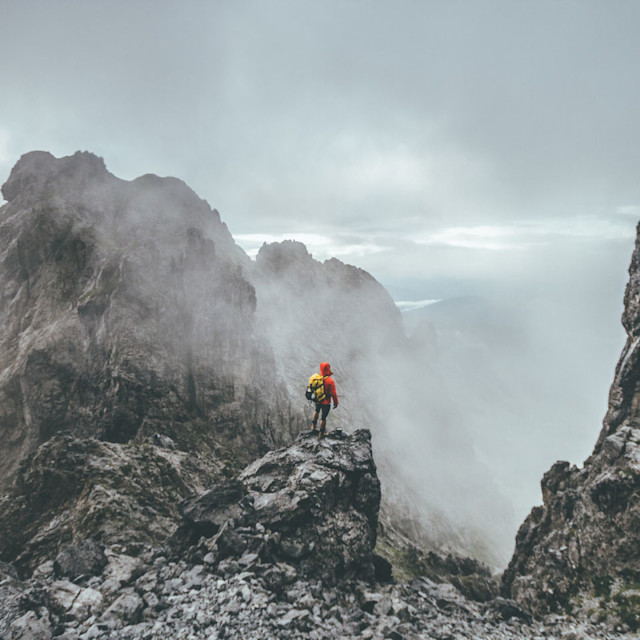
THE SCIENCE OF SURPRISE
There are 10 seconds left on the clock and the basketball player runs after a ball that is going out of bounds, throws it behind their head and—score! It sinks into the net. The fans go wild—and the regions in their brains associated with dopamine light up. “The brain responds more strongly (and differently) to surprising than non-surprising information, and that in turn helps us remember those surprising instances later on,” says James Antony, Ph.D., a neuroscience project scientist at the University of California, Davis, who has conducted research on this exact topic.
Outside of basketball, you might experience this same sort of dopamine rush when you hear about a person doing something out of the ordinary, like climbing El Capitan free solo or visiting every country of the world in a year. “There’s some enjoyment derived from just learning about it,” Antony says. You can also intentionally create the conditions to be surprised by, say, throwing a costume or themed party and encouraging creativity amongst guests.
“It’s obvious that these things are fun, but they’re also instances in which one functionally creates opportunities to be delighted by the unexpected. When we look back over the vast expanse of our lives, there are oceans of daily, mundane things we forget and little islands of memory, and those islands are more likely than not things that were surprising to us.”

MOVE, THEN TAKE IN ART.
You may not think of art and running as part of the same outing but the pursuits make a pretty good pair. In fact, research shows that physical activity is positively correlated with creativity. In one study, people who moved daily (anything from taking a walk to more vigorous exercise) were more innovative when it came to coming up with answers on tests of their inventiveness. It makes sense, then, that a run could prime you for taking in art.
That’s part of the logic behind the recent run to LACMA as part of Camp Platinum, led by Precision Run coach Jenia Koroleva. Koroleva, who is herself equally appreciative of modern art (see: Jeff Koons and PAZ) as she is of the classics like the Impressionists, even got creative in the route planning: She chose a roundabout path in order to keep the scenery more visually stimulating. “If you plan a little bit of extra [mileage] that makes you feel good, it creates a positive connection to what you've done.” And what better mindset is there for taking in some art?

AMPLIFY YOUR NUTRIENTS.
While you may not think of tofu and jalapeno together, it turns out that the combination of genistein (a chemical compound found in soy-based foods like edamame and tofu) and capsaicin (the antioxidant that gives chili peppers their heat) can have anti-inflammatory benefits. Similarly, research suggests that consuming foods high in vitamin C, like citrus, can enhance the absorption of iron, found in red meat.

